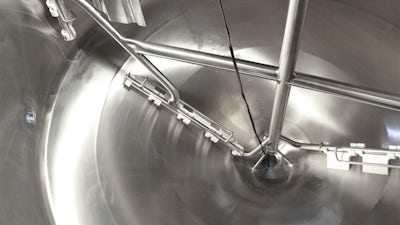How to Choose the Best Agitator for Your Milk Silo
- Share on Facebook
- Share on LinkedIn
- Share on Email
-
Copy Link
-
Share Link
- Food
- August 4, 2019
- 1 Minute Read
- Share on Facebook
- Share on LinkedIn
- Share on Email
-
Copy Link
-
Share Link

Introduction
Agitators contain different parts, such as bearings, seals, and couplings, but you should consider three in particular when purchasing one. The shaft, blade, and motor are three essential parts that require different considerations for every purchase. Different product types and production needs will dictate what combination of these three parts you choose.
Vertical or Horizontal Shaft
Should you install your agitator with the shaft vertical from the top or horizontally from the side? The answer depends on a variety of factors. Generally, horizontal agitators are used for larger tanks, while vertical ones work well for smaller ones. The vertical agitator exerts a downward force on the liquid, while horizontal agitators typically drive the liquid along straight paths along the bottom of the tank and then upward. One of the reasons a food processor might choose horizontal agitators is due to the reduced risk of sheering the product. Vertical agitators have to spin faster to push the liquid to the bottom of the tank. The increased speed may risk deteriorating some of the solids instead of evenly distributing them.
Blade Type
A few common types of agitator blades in the food processing industry include propeller, anchor, and paddle blades. The blade type depends on the type of product you are trying to agitate. Molasses will require viscosity and density different from milk, requiring a different type of blade to be installed. Some blades will require more energy to operate, but this is not necessarily a negative, as your particular product may not agitate well with smaller blades. Your product, tank size, and processing goals each play a role in determining how to choose your blade.
Motor
The choice of an agitator motor is similar to the blade – you must consider your product, tank size, and processing goals. There are also a few more things to consider. How much of a load cushion are you allowing for your motor? Are you installing one that will need to use 100% of its load capacity or less? Running a motor at a full load will reduce its efficiency, so you should install a motor with a little more power than the load dictates. You should also consider whether the volume of product within your tank will vary. If you are utilizing less than full capacity in your tank, then the settings on your motor should be adjusted accordingly.
Conclusion
When choosing an agitator, it would be wise to consider your unique circumstances and make a purchase based on those. A good vendor will help walk you through the process and ask questions without presuming you know the answer.
More from Mueller Academy
- Dealer Insights from Cornes AG
- Why Direct Load Milk Is on Its Way Out
- The European Union F-Gas Regulations & Their Impact on the Refrigeration Industry
- What is the HiPerForm® Refrigeration System?
- Introducing Our New Membrane-Based Water for Injection (WFI) Skids
- Manway Gasket Installation & Bushing Adjustment
- How to Decide Between a Horizontal & Vertical Milk Tank
- MES & PSG Feedwater Quality Requirements
- On-Site Tank Fabrication Under Deadline